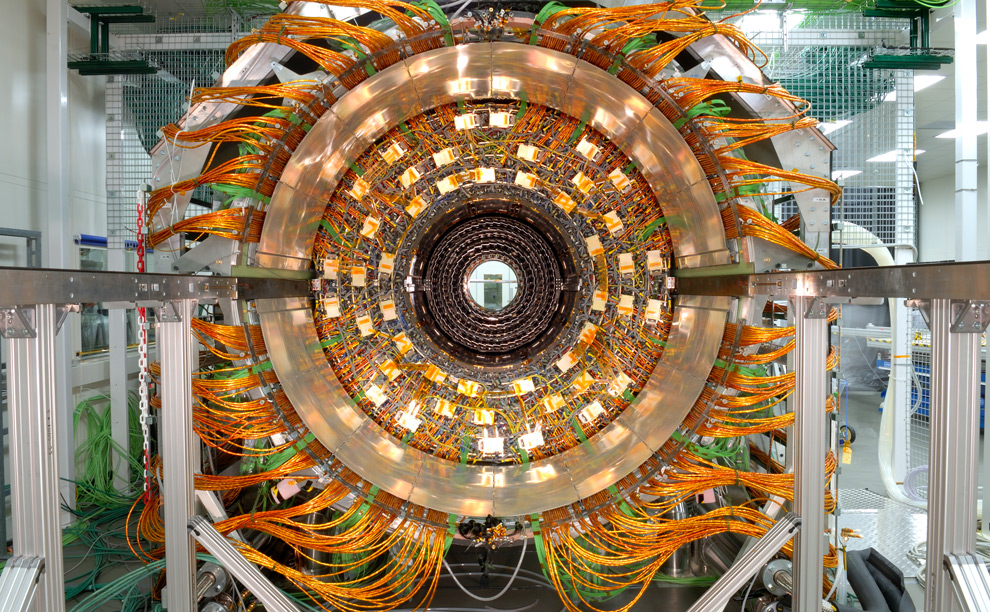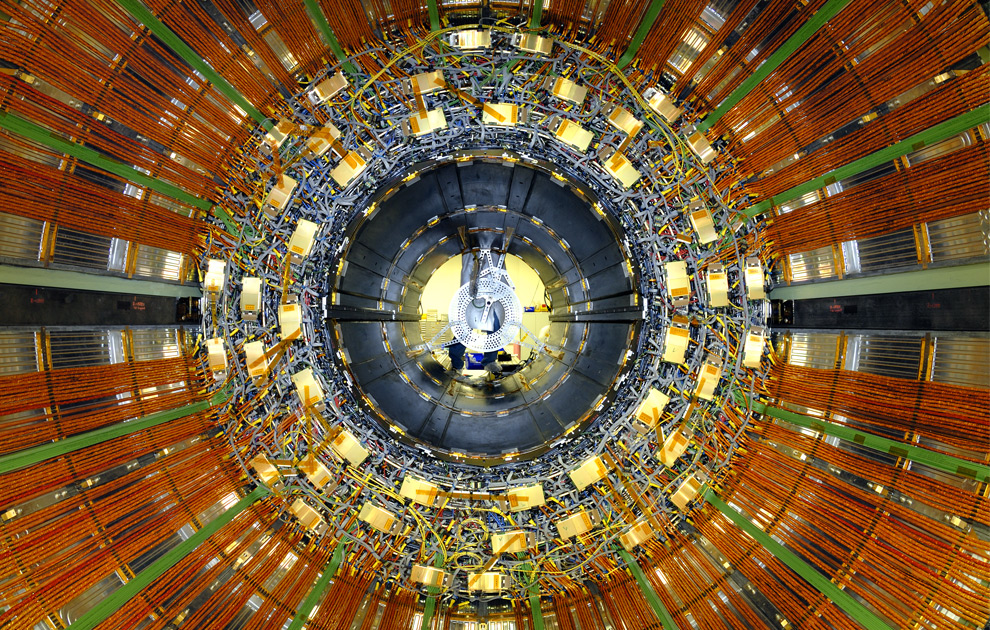Ever wondered how a subatomic particle feels as it accelerates through the supercollider on the road to annihilation? From the developer behind Kyoto and Lotus, Collider is a new audiovisual experience that takes you on a journey through a psychedelic vortex of light and sound. Now featuring full head-mounted support for the Oculus Rift DK1 and DK2, Collider brings together raw infrared imagery with full 3D immersion – and it’s available free on the Leap Motion App Store.
Inspired by the imagery and visual design of the Large Hadron Collider, Collider was designed over the course of three weeks. By grabbing and pulling the air like a quantum slingshot, you can propel yourself further into new generative visuals and dynamic sounds. The progression is self-driven, so you control the speed and intensity of the experience.
“When we looked at other Oculus demos, we found the sensation of traveling through things to be the most interesting visually,” says Funktronic Labs founder Eddie Lee. “We wanted to be traveling through something, like a tunnel, and we discovered images of the LHC. The vanishing point is extremely beautiful and intriguing – it inspired us to go down that route.”


Along with standard desktop mode, Collider also includes an Oculus Rift mode using our experimental VR tracking, which is rapidly evolving in developer beta. This means you can always see your hands in front of you when tripping the light fantastic – and with the Leap Motion Controller’s image passthrough, you can also see your real hands appear in ghostly infrared.
Eddie built Collider in collaboration with award-winning Japanese multimedia artist Baiyon, a prominent DJ in the Kyoto house and electronica scene. The pair originally worked together at Q-Games on the Playstation 3 title PixelJunk 4am, which also involved layering tracks and visuals. Their similar tastes in visual design and music brought them together, and this was the perfect opportunity to collaborate once again.
While Collider is a fun visual toy, Eddie says that we’re still just scratching the surface when it comes to audioreactive experiences in virtual reality. “Having a musical experience that is real-time interactive hasn’t really been explored yet. For example, if an artist wants to drop an album in VR, someone can really immerse themselves in the audio and visuals as well. In a way, that’s what we’re trying to do – it’s like a music video, but you progress yourself through with the music.”
What do you think about Collider and the possibilities of audioreactive reality? Whether you’re trying it on your computer screen or with the Oculus Rift, we’d love to know what you think. Post a review on the Leap Motion App Store or write a comment below!
LHC images by Maximilien Brice © CERN via Boston.com. Trailer by Edwon.
Twitch TV
More recently, Eddie joined us on our Twitch channel to talk about his game design philosophy and latest projects:
For cutting-edge projects and demos, tune in every Tuesday at 5pm PT to twitch.tv/leapmotiondeveloper. To make sure you never miss an episode, enter your email address to subscribe to up-to-the-minute Twitch updates:





Thanks for the amazing write-up, Alex! 🙂
October 17, 2014 at 11:31 am[…] niet elke blog wordt gelezen. En er is meer in de wereld: de 3d-printed-paper-airplane-guns, een virtuele supercollider met Oculus Rift en Leap Motion, vintage Mitsubishi puntenslijpers… Daarom een stukje service van ons naar jou toe: alles wat […]
October 18, 2014 at 12:16 am[…] by independent game studio Funktronic Labs, who also created the Kyoto and Lotus apps, it uses the Leap Motion and features full head-mounted support for the Oculus Rift DK1 and […]
October 27, 2014 at 1:31 pm[…] plugins and a MIDI controller 20 years ago. Nowadays, I jam around with Reason, Figure, and also Collider for Leap […]
February 21, 2015 at 7:01 am